Recent Posts
Are You Ready for Flooding?
6/5/2024 (Permalink)
 Are You Ready?
Are You Ready?
Preparing for a Flood
Make a plan for your household, including your pets, so that you and your family know what to do, where to go, and what you will need to protect yourselves from flooding. Learn and practice evacuation routes, shelter plans, and flash flood response. Gather supplies, including non-perishable foods, cleaning supplies, and water for several days, in case you must leave immediately or if services are cut off in your area.
In Case of Emergency
Keep important documents in a waterproof container. Create password-protected digital copies. Protect your property. Move valuables to higher levels. Declutter drains and gutters. Install check valves.
- Evacuate immediately, if told to evacuate. Never drive around barricades. Local responders use them to safely direct traffic out of flooded areas.
- Contact your healthcare provider If you are sick and need medical attention. Wait for further care instructions and shelter in place, if possible. If you are experiencing a medical emergency, call 9-1-1.
- Listen to EAS, NOAA Weather Radio or local alerting systems for current emergency information and instructions regarding flooding.
- Do not walk, swim or drive through flood waters. Turn Around. Don’t Drown!
- Stay off bridges over fast-moving water. Fast-moving water can wash bridges away without warning.
- Stay inside your car if it is trapped in rapidly moving water. Get on the roof if water is rising inside the car.
- Get to the highest level if trapped in a building. Only get on the roof if necessary and once there signal for help. Do not climb into a closed attic to avoid getting trapped by rising floodwater.
Staying Safe After a Flood
Pay attention to authorities for information and instructions. Return home only when authorities say it is safe.
- Avoid driving except in emergencies.
- Wear heavy work gloves, protective clothing and boots during clean up and use appropriate face coverings or masks if cleaning mold or other debris.
- People with asthma and other lung conditions and/or immune suppression should not enter buildings with indoor water leaks or mold growth that can be seen or smelled. Children should not take part in disaster cleanup work.
- Be aware that snakes and other animals may be in your house.
- Be aware of the risk of electrocution. Do not touch electrical equipment if it is wet or if you are standing in water. Turn off the electricity to prevent electric shock if it is safe to do so.
- Avoid wading in floodwater, which can be contaminated and contain dangerous debris. Underground or downed power lines can also electrically charge the water.
- Use a generator or other gasoline-powered machinery ONLY outdoors and away from windows.
SERVPRO of Jacksonville Northwest is the premiere provider in storm and flooding cleanup/restoration and remodeling so plug our number into your phones so we are only a few taps away.
5 Spring Cleaning Tips to Avoid Water Damage
3/15/2024 (Permalink)
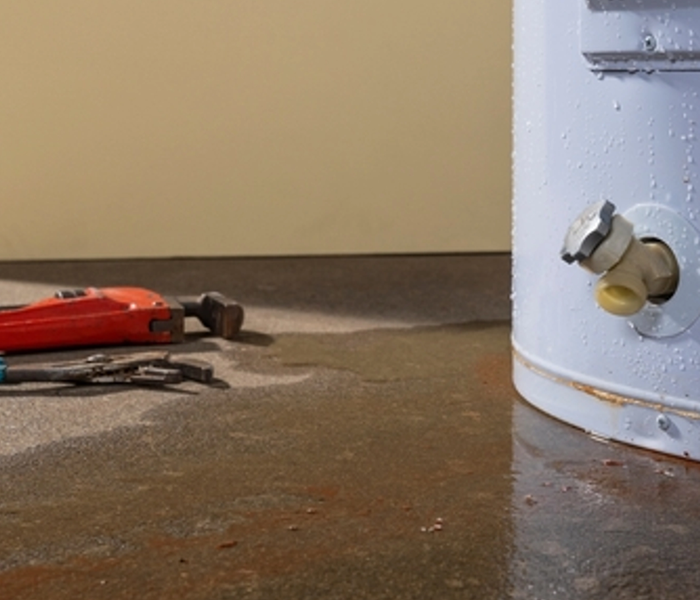 Maintain appliances to avoid water damage!
Maintain appliances to avoid water damage!
Tip #1: Inspect Appliances for Leaks
Leaking appliances are a leading cause of water damage in residential settings. Dishwashers, refrigerators, water heaters and washing machines are water damage disasters waiting to happen, so it is essential to regularly inspect these appliances to ensure that they are functioning correctly and have not been damaged.
- Look for signs of small leaks that may usually go unnoticed
- Replace defective, cracked, or torn seals
- Inspect all supply hoses
- Make sure all valve connections are tight
- Look into acquiring a leak detector
- Inspect the dishwasher door gaskets after cleaning
- Consider upgrading to stainless steel cord instead of plastic supply tubing for water supply tubes to the washing machine
Tip #2: Survey the Roof and Attic for Damage and Leaks
Roof leaks are another top cause of water leaks. A leaking roof allows water intrusion to damage the ceiling, attic, and walls, causing wooden building materials to rot and mold growth to occur.
If the home has an attic, look for any signs or smells of water damage or microbial growth.
If you notice anything that needs closer inspection or repair, call a roofer.
Tip #3: Remove Clogs and Blockages From Gutters and Downspouts
Gutters and downspouts help guide water away from the foundation of a house, preventing water from entering the structure or compromising the foundation. When these fixtures become clogged, the water build-up can rot away the wooden exterior near the eaves and create new avenues for water to migrate into the home.
Remove leaves, moss, debris, mildew, mold, or any other obstructions. Never use a pressure washer to clean gutters and downspouts since the high pressure and heat of this cleaning method can cause damage.
Tip #4: Apply Caulk to Any Cracks or Gaps in the Home’s Exterior and Interior
Gaps and cracks are an easy entry for water to intrude into a home. Inspect the house for cracks and thorough attention to the joints and frames of windows. Use the appropriate caulk to seal the area or, for cracks in masonry and concrete, use hydraulic cement.
Tip #5: Ensure the Landscaping Does Not Direct Water Towards the Home
Warmer temperatures make spring and summer a favorite time to plan and work on landscape projects. One landscape project that can prevent water damage involves adjusting the yard so that it directs water away from the home. While most properties have grading that slopes away from the house, some properties are not graded properly, which means that water can pool near the house and compromise the foundation. Solutions that are less intrusive than adjusting the grading include a French drain, an underground drainpipe, or a dry creek.
If you incur a water damage, from any source, SERVPRO of Jacksonville Northwest is available 24/7 for your water damage restoration needs!
Prepare For A Storm Before You’re In Its Path
2/22/2024 (Permalink)
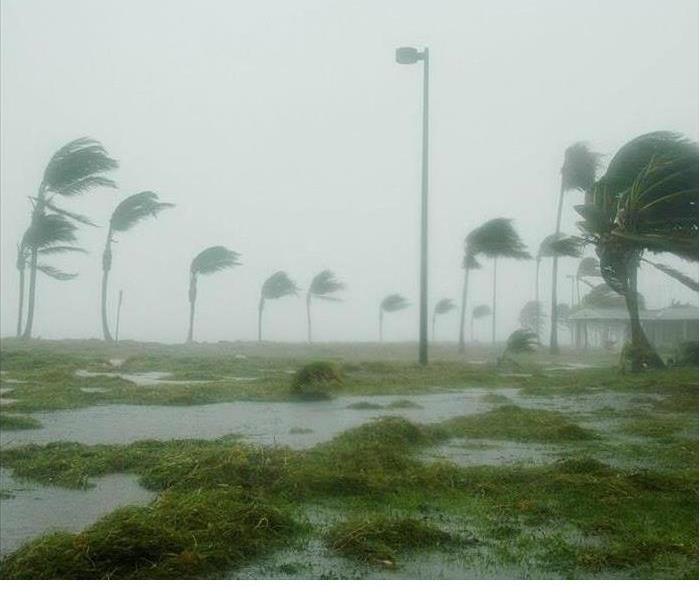 Florida Storm Flooding
Florida Storm Flooding
Before a Flood
- Find out what your flood risk is.
- Avoid building in a floodprone area unless you elevate and reinforce your home.
- Retrofit your property. Elevate the A/C, water heater and electric panel if susceptible to flooding.
- Install “check valves” in sewer traps to prevent floodwater from backing up into the drains of your home.
- Purchase flood insurance for your home, business or rental.
- Know your evacuation zone. .
- Make an emergency plan to protect you, your family and your pets. Pet friendly shelters are limited.
- Register to receive emergency alerts.
- Protect your home by taking actions to prevent flooding.
- For more information on what to do before, during and after a natural disaster, visit Emergency Management.
- Don’t forget flooding can still occur outside of flood zones.
- Duval County’s local emergency preparedness measures are always being improved and updated. This includes a significant change in the statewide approach to evacuation zones. In the past, evacuation zones have been primarily based on the category of the approaching storm. New scientific data that includes other factors, such as wave action, precipitation, and areas known to flood, has allowed us to better define evacuation zones for Duval County. Evacuation zones are based on a lettering system, with A,B,C,D,E, and F Zones. You can find your evacuation zone on your county’s government website.
SERVPRO® of Jacksonville Northwest is ready to assist you in any flooding or other natural disasters that occur in your city or county with highly trained technicians!
When Disasters Take Over Whole Cities
2/21/2024 (Permalink)
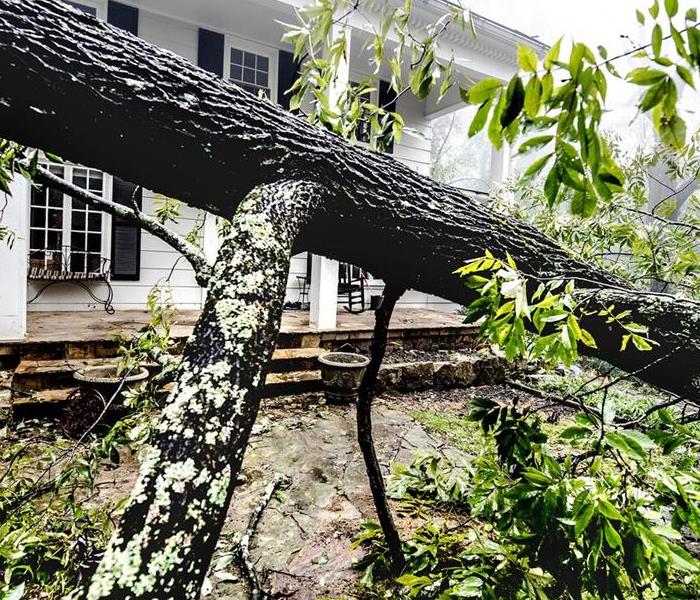 Tree down after a storm.
Tree down after a storm.
Fire. Flood. Ice. Snow. Hurricane. Tropical Storm. Mold. Each of these circumstances can have a devastating effect on your business. With more than 2210 locations in the United States and Canada, there are SERVPRO® highly trained professionals available around the clock, including holidays, to help with your commercial storm damage repair and restoration in any situation, big or small. We work to make it “Like it never even happened.”Natural disasters can strike without warning, but the SERVPRO Disaster Recovery Team is always ready. We are Faster to any size disaster™ because our uniquely trained professionals have the skills and knowledge to serve your specific commercial storm damage repair and restoration needs. Our network of teams mobilizes across the country in a disaster to support large-scale cleanup, restoration, and repair. When you need us, SERVPRO of Jacksonville Northwest can be there to provide Commercial Damage Restoration, Commercial Construction Services, and Commercial Large Loss and Disaster Recovery. Whether you live in our local territory in Duval county, we are always here to help(24 hours every day)and when disasters such as hurricanes or tropical storms occur, SERVPRO franchises across the country, near and far, come to aid in disaster recovery to us in Jacksonville!
Our Disaster Recovery Team is a network of teams that mobilize across the country in a disaster to support large-scale cleanup, restoration, and repair. When you need us, SERVPRO can be there to provide Commercial Damage Restoration, Commercial Construction Services, and Commercial Large Loss and Disaster Recovery.
Water Damage Timeline
2/21/2024 (Permalink)
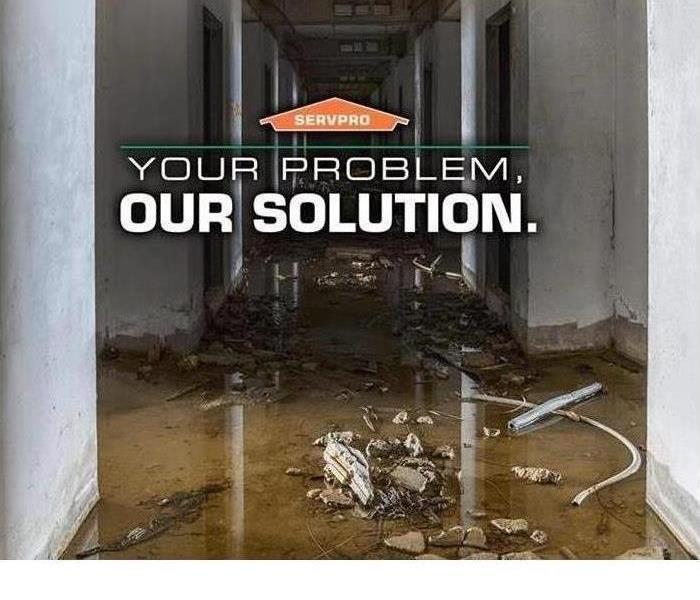 SERVPRO Water Damage
SERVPRO Water Damage
Whether Your Hot Water Leaks or a Storm With Torrential Rain, Water Invades Your Home or Structure the Same.
Within Minutes
- Water quickly spreads throughout your property, saturating everything in its path.
- Water is absorbed into walls, floors, upholstery, and belongings.
- Furniture finishes may bleed, causing permanent staining on carpets.
- Photographs, books, and other paper goods start to swell and warp. Be sure to move keepsakes and important papers to another area or a waterproof safe.
Hours 1 - 24:
- Drywall begins to swell and break down.
- Metal surfaces begin to tarnish.
- Furniture begins to swell and crack.
- Dyes and inks from cloth and paper goods spread and stain.
- A musty odor appears.
48 Hours to 1 Week:
- Mold and mildew may grow and spread.
- Doors, windows, and studs swell and warp.
- Metal begins to rust and corrode.
- Furniture warps and shows signs of mold.
- Paint begins to blister.
- Wood flooring swells and warps.
- Serious biohazard contamination is possible.
More Than 1 Week:
- Restoration time and cost increase dramatically; replacing contaminated materials and structural rebuilding may be extensive.
- Structural safety, mold growth, and biohazard contaminants pose serious risks to occupants.
As you can see, the longer it takes for disaster cleanup to begin, the likelihood of items being salvageable greatly and quickly increases. This is not a situation an individual family is able to handle on their own.
It is imperative to act quickly by calling SERVPRO of Jacksonville Northwest to get control of the water migration to protect your possessions and the structure!
Pack Out Contents Safely with SERVPRO during desperate times.
2/9/2024 (Permalink)
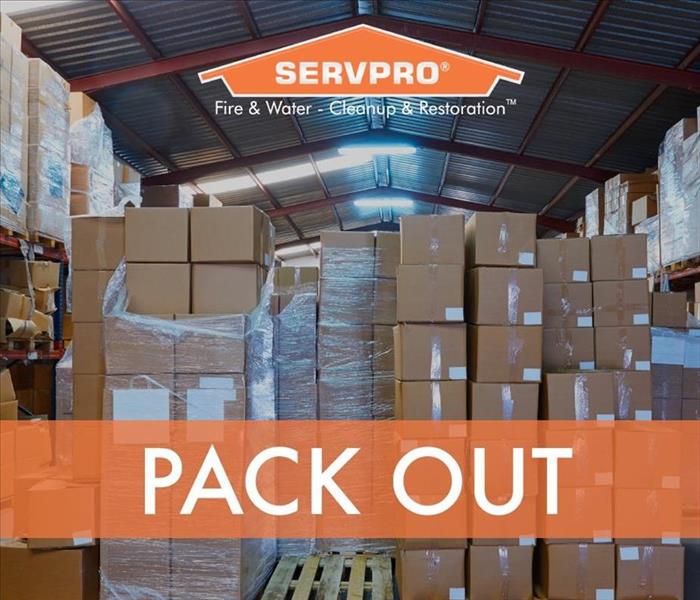 SERVPRO pack out, contents, moving services, content cleaning, cleaning, fire, restoration, storing, packing.
SERVPRO pack out, contents, moving services, content cleaning, cleaning, fire, restoration, storing, packing.
SERVPRO offers pack-out services as part of their comprehensive restoration and cleaning services. Pack-out services are typically utilized in situations where a property has suffered severe damage due to fire, water, mold, or other disasters, and it's necessary to remove belongings from the affected area for cleaning, restoration, or storage.
Here's an overview of what you can expect from SERVPRO's pack-out services:
Assessment and Inventory: Trained professionals will assess the extent of the damage and create a detailed inventory of items that need to be packed out. This inventory helps keep track of all belongings throughout the process.
Packaging and Removal: SERVPRO teams carefully pack and label each item to ensure safe transportation. Fragile items may be wrapped or boxed securely to prevent further damage during transit.
Transportation: Belongings are transported to a secure facility for cleaning, restoration, or storage. SERVPRO typically uses specialized vehicles equipped to handle sensitive items safely.
Cleaning and Restoration: At the facility, SERVPRO employs advanced cleaning techniques and equipment to restore items to their pre-damage condition. This may include cleaning, deodorizing, and sanitizing belongings as needed.
Storage: If the property is undergoing restoration, belongings may be stored securely at SERVPRO's facility until the restoration process is complete. Climate-controlled storage options may be available to protect sensitive items.
Documentation: Throughout the process, SERVPRO maintains detailed documentation of all items, including photographs and written records. This documentation helps track the progress of the restoration and ensures that items are returned to their rightful owners.
Return of Belongings: Once the restoration is complete, SERVPRO will coordinate the return of belongings to the property. Items are unpacked, inspected, and placed back in their original locations whenever possible.
SERVPRO's pack-out services aim to minimize disruption and help homeowners and businesses recover from disasters efficiently. By entrusting the packing, transportation, cleaning, and storage of belongings to trained professionals, property owners can focus on the restoration process with peace of mind.
Storms can devastate homes, SERVPRO offers an option to resolve.
2/9/2024 (Permalink)
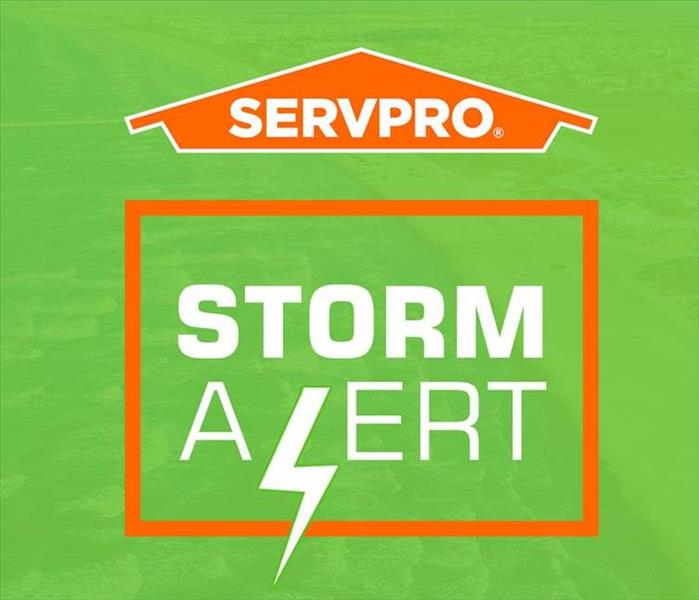 SERVPRO storm services, cleanup, response, 24/7
SERVPRO storm services, cleanup, response, 24/7
Storms can cause considerable damage to homes and businesses, leaving people in a state of distress and uncertainty. That's where SERVPRO storm services come in. SERVPRO is a professional cleaning and restoration company that specializes in handling storms and helping people get their lives back on track.
When a storm strikes, SERVPRO is ready to respond quickly and effectively. Their storm services include:
1. Emergency response: SERVPRO is available 24/7 to respond to damage emergencies. They have a team of trained professionals ready to assess the damage and develop a plan of action to restore the property.
2. Water damage restoration: Flooding is a common result of storms, and SERVPRO has the expertise equipment to extract water and dry out the affected areas. They use specialized drying techniques to prevent further damage, such as mold growth.
3. Wind damage restoration: High winds can cause extensive damage to roofs, windows, and other structural elements of property. SERVPRO can provide temporary repairs and work with trusted contractors to complete the necessary repairs.
4. Debris removal: Storms often leave behind a mess of debris, including fallen trees, branches, and other debris. SERVPRO can safely remove and dispose of debris to ensure the property is clear and safe.
5. Mold remediation: Excessive moisture from storms can lead to mold. SERVPRO has the necessary equipment and expertise to identify and safely remove from the affected areas. They also take steps to prevent future mold growth.
6. Document drying: If important documents or paperwork are damaged by storms, SERVPRO provides document drying services. They use specialized equipment to remove moisture and restore it to their preloss condition.
7. Content cleaning and restoration: SERVPRO offers pack-out services to carefully remove and clean personal belongings, furniture, and other things affected by the storm. They have secure storage facilities where items can be stored the property is fully restored.
8. Insurance assistance: Dealing with insurance claims after a storm can be overwhelming. SERVPRO can assist in the insurance process working directly with insurance companies, providing detailed documentation, and ensuring a smooth resolution.
SERVPRO storm services are designed to help people recover from the devastating effects of storms. With their expertise and dedication, they can restore properties and provide peace of mind during a stressful time.
Water? Do not fear, SERVPRO is here.
2/9/2024 (Permalink)
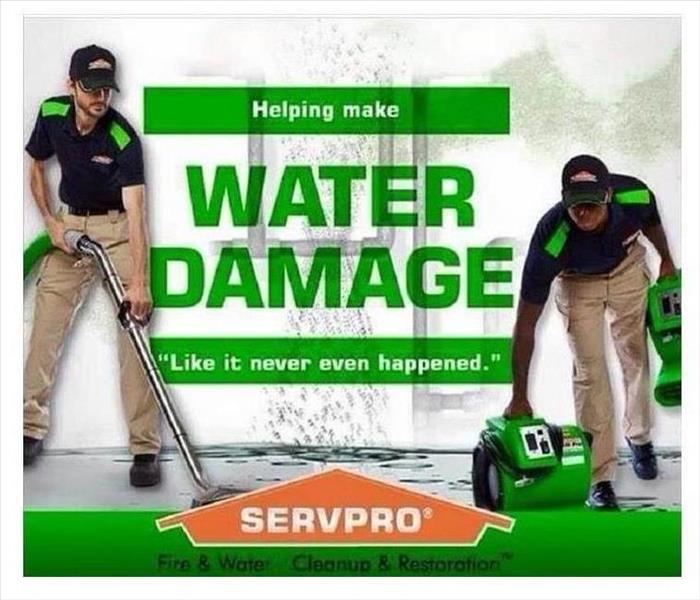 SERVPRO, water damage, water restoration, water cleanup, water remediation, water mitigation.
SERVPRO, water damage, water restoration, water cleanup, water remediation, water mitigation.
SERVPRO is known for its expertise in water damage restoration. Here are the general procedures SERVPRO typically follows when addressing water damage:
Emergency Contact: Upon receiving a call, SERVPRO responds quickly to assess the situation and determine the extent of the water damage.
Inspection and Assessment: Trained professionals inspect the property to identify the source of water and assess the damage. This includes determining the category and classification of the water damage, which helps in planning the restoration process.
Water Extraction: Using powerful pumps and vacuums, SERVPRO extracts standing water from the affected area promptly to prevent further damage and promote drying.
Drying and Dehumidification: After water extraction, SERVPRO employs specialized drying equipment such as air movers and dehumidifiers to remove moisture from surfaces, walls, carpets, and other materials.
Cleaning and Sanitizing: SERVPRO cleans and sanitizes affected areas, including walls, floors, furniture, and other belongings, to prevent mold and microbial growth and ensure a safe environment.
Restoration and Repairs: Depending on the extent of the damage, SERVPRO may perform necessary repairs and restoration work to restore the property to its pre-damaged condition. This could involve replacing damaged drywall, flooring, or other structural elements.
SERVPRO's water damage restoration procedures are designed to minimize disruption, mitigate further damage, and restore the property efficiently and effectively. Their trained technicians follow industry standards and best practices to ensure thorough and professional restoration services.
Avoid DIY Disaster
1/24/2024 (Permalink)
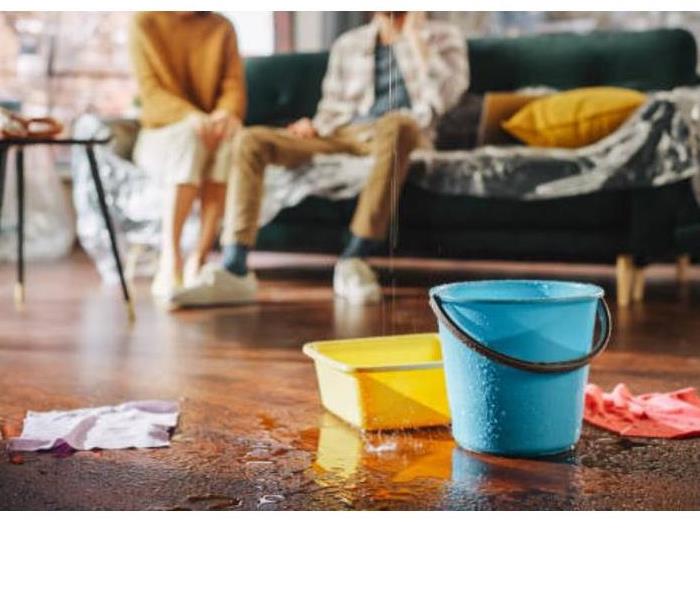 Avoid DIY Disaster
Avoid DIY Disaster
Water damage can strike at any time, often when you least expect it. Whether it's due to a burst pipe, flooding, or storm damage, knowing what to do in the immediate aftermath can make all the difference. At SERVPRO of Jacksonville Northwest, we want to empower you with essential water damage restoration tips to help protect your property and expedite the recovery process.
Safety First:
Before you jump into restoration, prioritize your safety:
- Ensure that the area is safe to enter, especially after a major flood or storm.
- Turn off the electricity to avoid electrical hazards.
- Wear appropriate safety gear, including gloves and protective clothing, when working with contaminated water.
Assess the Damage:
After safety is assured, take these steps:
Document the Damage: Take photos or videos of the affected areas. This documentation will be crucial for insurance claims.
Stop the Source: If possible, identify and stop the source of the water intrusion. Shut off the main water supply if needed.
Protect Valuables: Remove valuable items, documents, and electronics from the affected area.
Contacting a professional restoration company is crucial. SERVPRO's experts are trained to assess and mitigate water damage effectively. The sooner you reach out, the faster the restoration process can begin.
Begin Drying and Mitigation:
While waiting for SERVPRO's team to arrive, you can take some initial steps to mitigate further damage:
Remove Excess Water: Use mops or towels to remove standing water.
Ventilate the Area: Use fans and open windows to promote air circulation and aid in drying.
Dehumidify: If available, use a dehumidifier to remove excess moisture from the air.
Move Furniture: Elevate furniture on blocks or foil to prevent further damage.
Avoid DIY Restoration:
While it's tempting to handle water damage restoration on your own, it's best left to the professionals. Water damage can lead to mold growth, structural issues, and health hazards if not addressed correctly.
Insurance Claims:
Contact your insurance company as soon as possible and provide the documentation you collected earlier. SERVPRO of Jacksonville Northwest work directly with your insurance company to streamline the claims process.
Prevent Future Water Damage:
Once your property is restored, consider these preventative measures:
Regular Maintenance: Inspect your plumbing, roof, and foundation regularly to catch potential issues before they lead to water damage.
Proper Landscaping: Ensure your yard is properly graded to prevent water from flowing toward your foundation.
Sump Pump: Consider installing a sump pump in your basement or crawlspace to prevent flooding.
Water damage restoration is a daunting process, but with the right steps and the help of professionals like SERVPRO of Jacksonville Northwest, your property can be restored to its former glory. By following these tips and acting swiftly, you can minimize the impact of water damage and protect your investment. If you're faced with water damage, don't hesitate to reach out to us for a prompt and efficient restoration process. Your property's recovery is our priority.
SERVPRO handles Biohazard, no matter the severity.
1/22/2024 (Permalink)
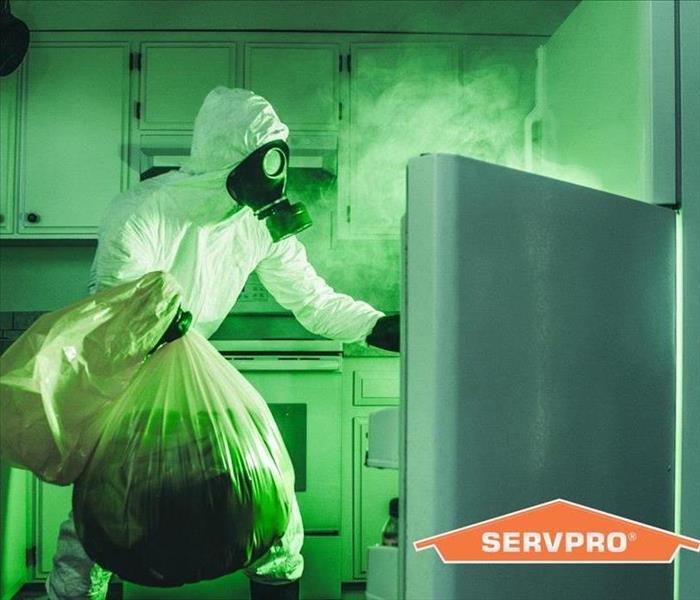 SERVPRO worker handling Biohazard waste. Worker is using proper PPE for biohazard jobs with proper mask and body suit.
SERVPRO worker handling Biohazard waste. Worker is using proper PPE for biohazard jobs with proper mask and body suit.
SERVPRO of Jacksonville Northwest offers biohazard cleaning services to address situations involving hazardous materials, pathogens, and other biohazards. Biohazard cleanup requires specialized training, equipment, and adherence to safety protocols. Here are some key aspects of SERVPRO's biohazard services:
Trauma and Crime Scene Cleanup:
- SERVPRO handles cleanup after traumatic events, crime scenes, or accidents. This includes the removal of biohazardous materials, blood, bodily fluids, and other contaminants.
Hoarding Cleanup:
- Cleanup of hoarding situations often involves dealing with biohazards. SERVPRO can assist in the safe removal of biohazardous materials while addressing the unique challenges of hoarding environments.
Mold Remediation:
- While not all mold is considered a biohazard, certain types of molds can produce mycotoxins that pose health risks. SERVPRO provides mold remediation services, addressing potential biohazards associated with mold.
Sewage Cleanup:
- Sewage backups can contain harmful pathogens and contaminants, making it a biohazardous situation. SERVPRO specializes in cleaning and restoring properties affected by sewage backups.
Chemical Spills and Industrial Accidents:
- Cleanup of hazardous chemical spills or industrial accidents is part of SERVPRO's biohazard services. This involves proper handling, removal, and disposal of hazardous materials.
Disinfection and Decontamination:
- SERVPRO employs advanced cleaning and disinfection techniques to eliminate biohazards and pathogens. This is especially important in situations where infectious diseases or viruses are a concern.
Personal Protective Equipment (PPE):
- SERVPRO technicians use appropriate PPE to ensure their safety while handling biohazardous materials. This includes gloves, masks, and other protective gear.
Compliance with Regulations:
- SERVPRO follows industry standards and regulations for biohazard cleanup, ensuring that the process is conducted safely and in compliance with health and safety guidelines.
Insurance Assistance:
- As with other services, SERVPRO may assist clients in coordinating insurance claims related to biohazard cleanup, simplifying the process for property owners.
Biohazard situations require immediate attention due to the potential health risks involved. Professional cleanup services, such as those offered by SERVPRO, ensure a thorough and safe remediation process.


 24/7 Emergency Service
24/7 Emergency Service









